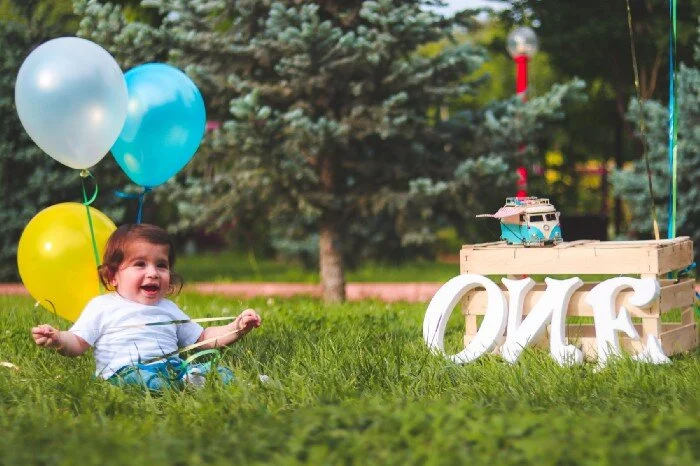Cover Photo by Hasan Albari from Pexels
This skill makes everything more tolerable
Three years ago I learned a very valuable skill I never knew would serve me so well after my son was born. At the time, I was living in Cambodia, working from a coworking/coliving space in Siem Reap. Days were hot, sunny, and humid, making me drowsy in the afternoon. I could hardly concentrate, and so, after lunch, I’d lay down on my bed to rest a little. After a few attempts, I managed to be able to nap on demand.
Now, I make it sound easy, but the reality is that I’d been trying to power nap for years prior. I was reading about its benefits and really wanted to implement it in my routine. But I was working in an open office setting with nowhere to nap. Napping wasn’t exactly frown upon, but definitely not encouraged. But we were all working from home on Wednesdays, so that was my chance to practice it.
It never worked. In retrospect, it couldn’t. Practicing once a week isn’t enough. In addition, I was too concerned about the fact that I wasn’t falling asleep. The truth is, it’s better to not overthink this and just close your eyes, even if you don’t fall asleep. In a way, it’s a form of meditation.
When I was able to be consistent and not overthink it is when I managed to become good at power napping. Power napping is about napping for 15–30 minutes. You don’t fall into deep sleep and feel rested as if you slept for hours.
If you’ve tried it before and didn’t feel rested, you likely didn’t do it right. But before I jump into how you can do it, I want to talk about the benefits of learning it, and especially before having a baby.
Why power napping is the number one skill to learn before you have a baby
They say that babies sleep 16 hours a day. Well, not mine. If he clocks a cumulative eight hours of sleep in a day, that’s a major victory and it goes straight into his win journal!
Babies need feeding between 2–3 hours. That’s the most you’ll sleep in one go. Sometimes the feedings can take an hour or more, so you really only get 1–2 hours of sleep every time.
And if you’re a man reading this, know that you have a very important role to play in this, even if your woman is breastfeeding. I live to serve my wife first and my son second. To be a true gentleman and the favourite dad on the block, you have to take care of everything else — cooking, chores, laundry, comforting baby & mommy, changing diapers, etc. Mommy needs rest. Breastfeeding is intense and she’ll be tired.
Only once you’ve handled the mommy needs can you rest. Many times, you really will only get 30 minutes of down time. If you can’t power nap then, good luck staying calm and sane during unavoidable baby outbursts.
My wife learned to power nap alongside me about a year ago. She used to think it was a waste of time. When she mastered it, she loved it. Now as a mother of a newborn baby, she couldn’t be more grateful that she learned it.
Everything you need to know about how to power nap
Here, I’ll tell you the what, where, when, and how of power napping.
What are the pitfalls of power napping?
Sadly, power naps are not without pitfalls.
Sometimes, you may wake up disoriented and groggy. This happens more frequently when you don’t stick to less than 30 minutes.
A “failed” nap may leave you in that state for about as long as you napped for. As such, unless you’ve mastered power napping, it can be detrimental to people who must perform right after waking up.
Also, be careful with the time of the day you power nap. The later you power nap, the more “dangerous” it becomes to disrupt your ability to fall asleep at night. You may also sleep less and have lower quality sleep. Most recommend power napping before the middle of the afternoon. I can power nap all the way to 6 PM without affecting my sleep, but it’s different for everyone. Overall, try to stick to 3 PM or earlier.
Where should I power nap?
With good practice, you can start to power nap pretty much anywhere. I’ve power napped in beds, on the floor, on my desk, on a chair, on park benches, and a few other places.
The ideal place to practice power napping is somewhere comfortable, but not too comfortable. You don’t want to have a hard time waking up! You also want to practice where there will be very minimal distractions. No distraction is better.
When should I power nap?
The short answer: for most people, before 3pm. If you’re a parent of a young child, just about any time will do.
What I found works best for me is power napping about an hour after I had lunch. And because my energy levels are at its lowest after lunch, I typically focus on administrative tasks that don’t require me to think much. I do that for one hour on average, and then I power nap. I usually end up preparing for a power nap between 2:30 pm and 3:30 pm.
Between 2:00 pm and 3:00 pm is probably the best window for most people. But as with anything, experiment to see what works for you. Don’t give up on the first try. Practice consistently for 1–2 weeks to see if the time can really work for you.
What does a power nap typically look like?
Here are eight things to consider:
Don’t power nap if you’re not tired enough. I usually fall asleep in about 10–15 minutes when I’m really tired. This is different for everyone. 10–15 is actually quite a lot. If I’m not tired enough but need a break, I usually take a 15 to 20-minute walk.
Put an alarm. I set mine for 25 minutes. I end up napping between 10–15 minutes. The alarm frees you from thinking about waking up on time.
Don’t nap for more than 30 minutes. This depends on people obviously. 10–15 minutes work great for me. 20 minutes makes it hard for me to wake up.
Cut off the distractions. I always listen to a song called Earth, from Gladiator’s soundtrack (by Hans Zimmer). I know other people who use earplugs. If you’re good at meditating, you can probably do without earplugs or music.
Be comfortable but not too much. Napping in a comfortable bed makes it hard to get out. I used to nap on my chair, resting my head on the desk with my arms crossed over. It’s really not that comfortable. If you have access to a couch, I would go for that.
A “successful” nap is not always about sleeping. I don’t always fall asleep. I still gain energy back from relaxing.
It takes some time to recover from the nap. Plan for 15–20 minutes to be back to full energy. A successful power nap almost entirely removes this grace period.
Don’t nap when it’s close to bedtime. By close to bedtime, I mean less than 3–4 hours. You will have a hard time sleeping at night if you do that.
How can I practice?
Don’t judge a “failed” nap. There are still benefits even if you don’t always fall asleep. Acknowledge that it does take time to fully recover as well. I’ve been doing it for about three years now and on average, I get two to three extra productive hours every day.
Trust me, you will fail at first. Don’t give up.
Like any skill, you have to do it consistently. So much so that it becomes a habit. Your body will start to feel tired at the same time every day, making it easier every day to power nap.
Also, if you’re able to stick to the same environment every time, your brain will get used it and associate it with power napping. Nowadays I always sleep on a mattress, on my back, arms on my stomach, with this song playing on repeat.
The coffee nap
A powerful alternative is the coffee nap: quickly drink a shot of espresso coffee right before your power nap. The caffeine takes about 20 minutes to kick in, so right at the same time as you finish your power nap.
I would suggest you don’t try coffee naps until you can do power naps successfully, for three reasons:
Not everyone can quickly drink a hot coffee;
It’s harder to fall asleep; and
It’s quite powerful when you do it right. When I do coffee naps, I have to be ready to go to bed much later. It makes it much harder for me to fall asleep.
Everything you need to know
When you have a baby, power naps will be your main source of sleep.
Power naps give you extra energy to perform better shortly after.
Power naps are anywhere between 15–30 minutes.
It takes weeks and even months of practice to become good at it.
Don’t practice somewhere too comfortable.
Always nap in the same pose with the same music or background noise.
Even if you didn’t sleep, you still feel more rested and energized.
You can do this!

